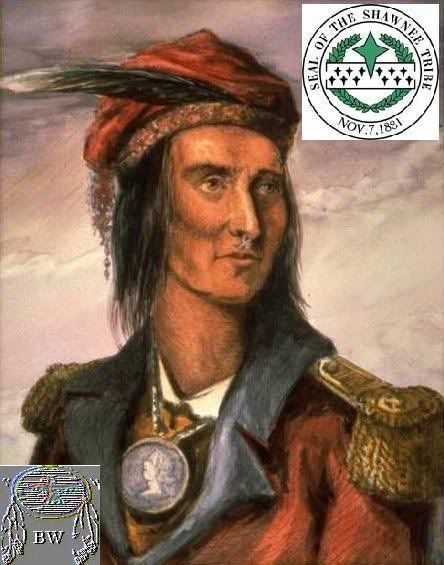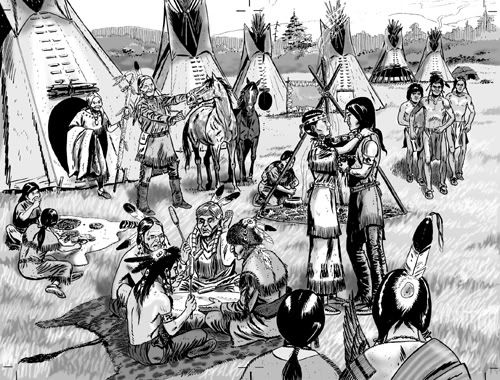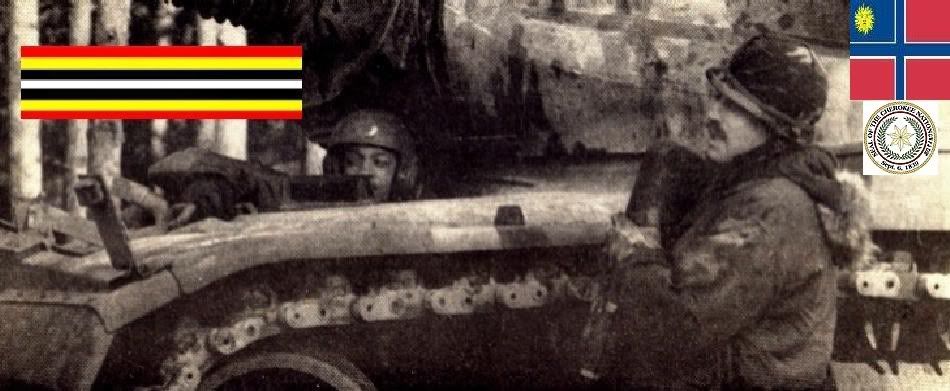|

Chief Tecumseh
Warriors Citation
Tecumseh was a Shawnee Warrior. The Shawnee Nation was the largest group of tribes in Ohio. Tecumseh's father Puckeshinwa
was a Shawnee Chief. The settlers in western Virginia were claiming that the Shawnee land belonged to them, so the Shawnee
began to fight the settlers. Puckeshinwa was killed during the fighting. Cheeseekau was Tecumseh's oldest brother. He taught
Tecumseh how to be a good woodsman, hunter, and warrior. When Tecumseh was 15 he saw his village burn down. After the village
burned Tecumseh's mother took his small brother and sisters to a safe home. Tecumseh and his brother Cheeseekau went to Tennessee
to help the Cherokee defend their land. Cheeseekau was killed in battle. Tecumseh became a chief and lead the warriors into
many fights with the settlers and soldiers. In the spring of 1795 twelve Chiefs signed a peace treaty giving up a large piece
of land to the Americans. After the treaty was signed Tecumseh moved just west of the treaty line with his warriors. Tecumseh
had a dream of uniting all Native Americans from the Gulf of Mexico to the Great Lakes into one Native American Nation. Tenskwatawa,
Tecumseh's younger brother, joined him in his dream of peace. Tenskwatawa believed the Great Spirit had given him magic powers
and that he could tell the future. Tecumseh and Tenskwatawa built a large Native American village and called it Tippecanoe.William
Henry Harrison was the governor of the Native American Territory. Harrison called a great council at Fort Wayne and asked
many poor, old Chiefs to sign a treaty. The treaty gave away three million acres of land for very little money.

Tecumseh was angry over the treaty. He asked to meet with Harrison at Vincennes. Tecumseh told Harrison that the treaties
were only useless pieces of paper and that the Great Spirit had given the land to the Native American s. Harrison told his
men to find any excuse to burn down the village of Tecumseh. Late in 1811 Harrison led one thousand men to attack Tippecanoe.
Tenekwatawa told the Native American that his magic powers would protect them from the gunpowder. Many Native Americans died
in the battle. In 1812 the English and the Americans began to fight. Tecumseh led 32 tribes to help the English fight the
Bluecoats and the American settlers. At Fort Detroit Tecumseh had the warriors run in and out of the woods three times yelling
and making cries so that it looked like he had many more men. The soldiers at the fort surrendered. General Harrison built
a small fort on the Maumee River in Ohio. There he made plans to take back Fort Detroit. General Harrison would not fight
Tecumseh and English General Proctor when they surrounded the fort because he knew he had more troops coming. When the battle
took place the Native Americans won the fight for the English. General Proctor ordered the English and the Native Americans
to move north to Fort Malden close to Lake Erie. On September 10, 1813 a naval battle took place on Lake Erie. After the battle
the English fleet was destroyed. General Proctor took his men and ran into Canada. Tecumseh and the Native Americans went
with General Proctor into Canada. Tecumseh begged General Proctor to turn around and fight the Americans. After General Proctor
would not fight, the Native Americans decided to fight Harrison without the help of the English. On October 5, 1813 Tecumseh
fought Harrison. Tecumseh was killed during the battle. Tecumseh's dream of a large Native American nation died with him.
From: historical accounts & records


LINK TO BRAVEHORSE WARRIORS VOLUME TWO
|

